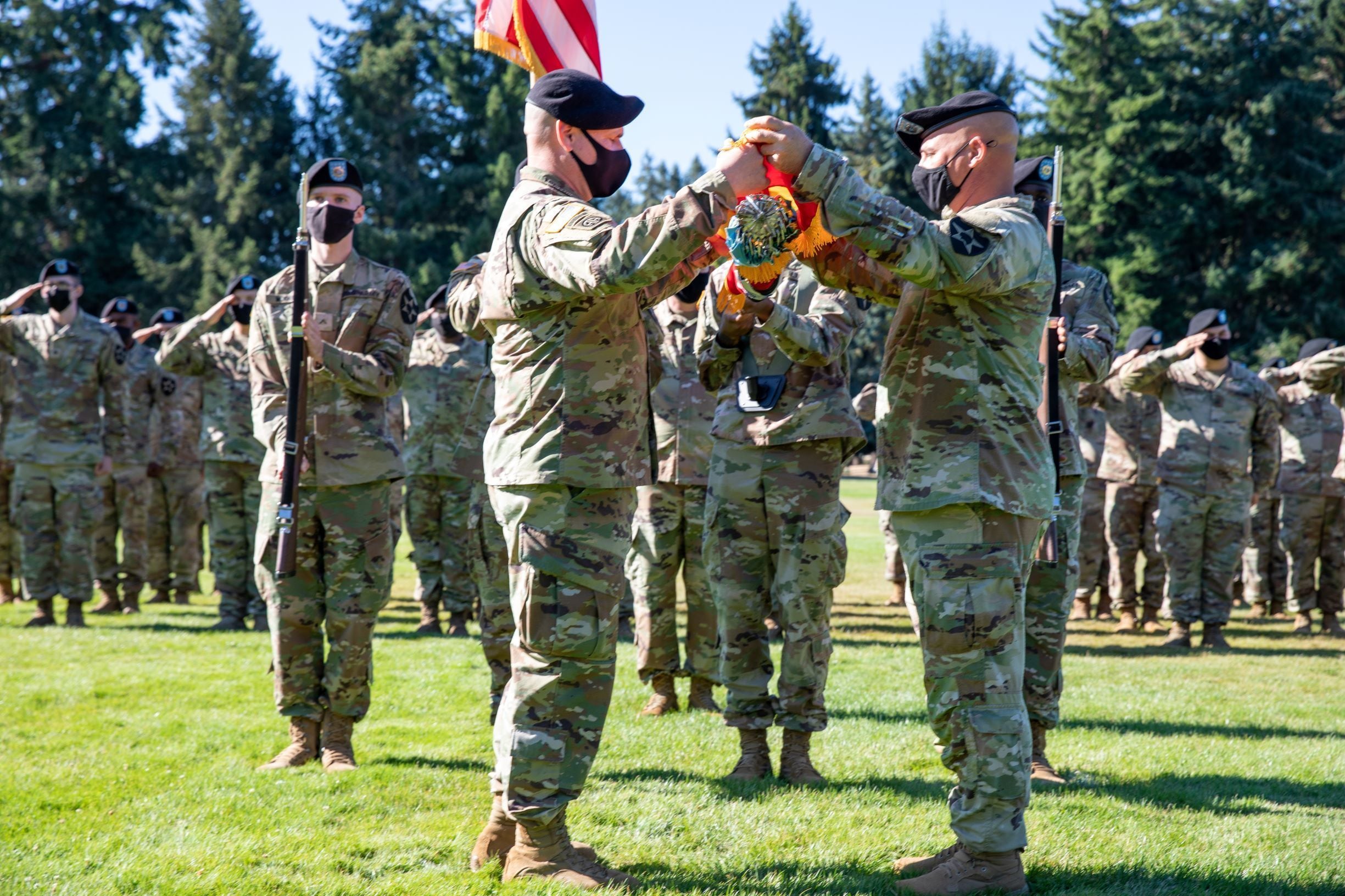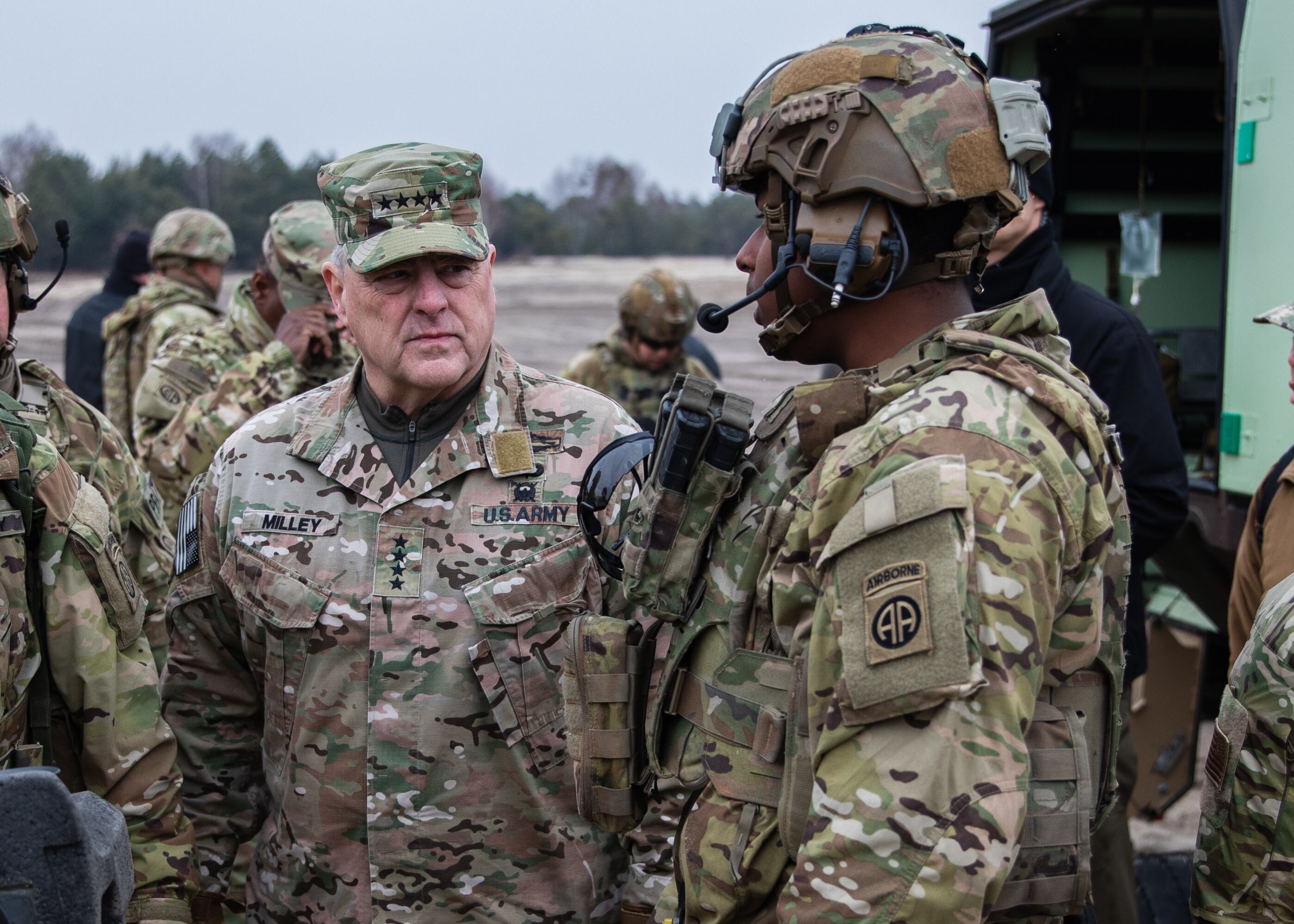Thousands of troops who mobilized over the past two months in response to Russia’s military build-up and then invasion of Ukraine are probably going to remain activated into the summer, the Pentagon confirmed on Thursday.
More than 5,000 troops are in Poland, training with local forces and facilitating handoffs of weapons and equipment to Ukrainian forces, while a carrier strike group has been operating in the Mediterranean Sea since late last year. Defense Secretary Lloyd Austin has decided both will extend past their original estimated deployments, Pentagon spokesman John Kirby said.
“He reviews the posture literally every day, and he has decided that he’s going to keep the 82nd there for a while longer,” Kirby said. “And he has decided that the carrier Truman and her strike group will stay in the Med for a while longer.”
The support units that accompanied the 82nd will also stay, Kirby added. Aviation assets and an armored brigade combat team have also deployed to Germany and across Eastern Europe.
Kirby could not offer details on how long the extension would last, nor how long the original deployments were slated for. In general, unplanned deployments tend to be slated for about 90 days.
To date, about 11,000 troops have joined 80,000 that are already stationed in Europe. As Russia’s war in Ukraine wages on, there have been renewed discussions about how many American troops is the right number in Europe.
Air Force Gen. Tod Wolters, the head of U.S. European Command, told lawmakers on Wednesday that he has had discussions with his chain of command about increasing the number of troops on the continent.
“It’s got to change,” he said during a House Armed Services Committee hearing. “And certainly, this is an opportunity, as a result of this senseless act on behalf of Russia, to reexamine the permanent military architecture that exists not only in Eastern Europe, but in our air policing activity, in aviation and in our standing naval maritime groups.”
In the past 10 years, the Army has closed multiple garrisons in Germany, replacing permanently stationed forces with back-to-back rotational deployments.
Those troops have trained local forces up and down NATO’s eastern front, leading countries like Poland and Romania to suggest permanent basing.
“The rotational troop presence is not adequate,” Rep. Mike Rogers, R-Alabama, told Wolters. “It needs to be permanent.”
Wolters’ advice was included in considerations of a global force posture review completed last year. The Pentagon has classified its results, telling reporters that they will find out about the recommendations if and when they are announced as formal moves.
RELATED

“You can bet that senior leadership at the department are going to take a look at our European posture going forward,” Kirby told Military Times on Wednesday. “Again, I can’t tell you when a decision is going to be made one way or the other.”
Asked whether the department had been considering making changes before Russia’s invasion, Kirby said the Pentagon had consulted with Wolters, but that the war in Ukraine would also be part of the decision-making process.
“Clearly, because of the acute threat of Russia and clearly, because of the way the security environment in Europe has changed,” he said. “So could it mean more troops more permanently based in Europe? It could, but again, no decisions have been made.”
Meghann Myers is the Pentagon bureau chief at Military Times. She covers operations, policy, personnel, leadership and other issues affecting service members.




